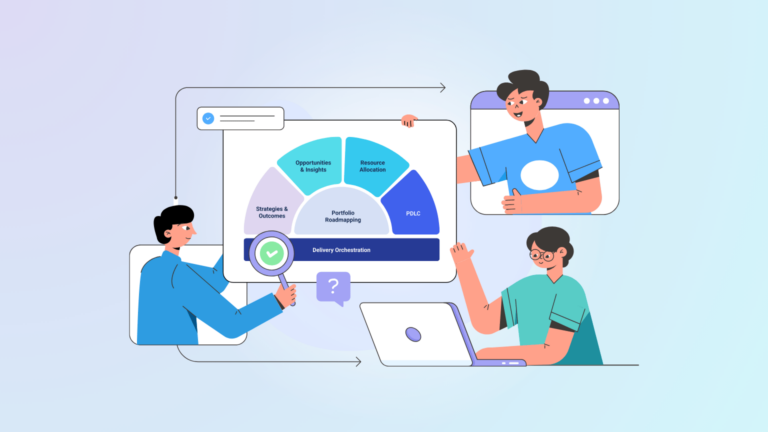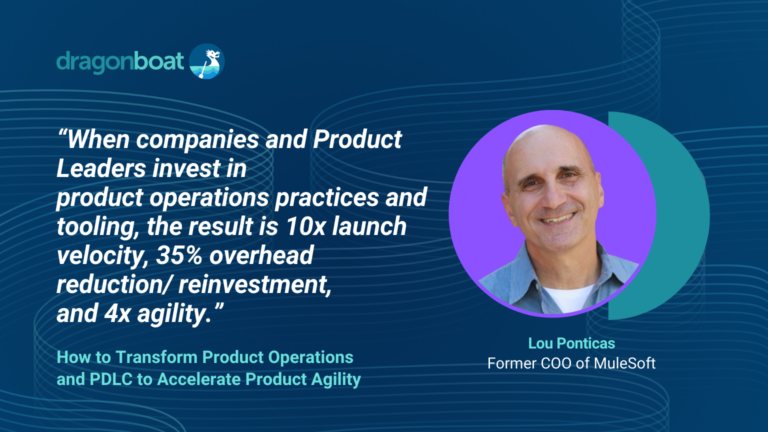Marketing roadmaps are crucial for any business seeking specific outcomes because they help communicate plans and keep your teams in sync. But what exactly is a marketing roadmap, and how can it help you connect marketing initiatives to high-level strategic plans and business goals? Below we provide an overview and practical tips for creating marketing roadmaps for your organization.
What is a Marketing Roadmap
A marketing roadmap is a document that visually represents your strategic marketing plans and how they will evolve. It allows you to plot out all traditional and digital marketing efforts and share them with your executive team and other stakeholders to solicit feedback, generate support, and guide your work.
Most marketing teams build several roadmaps for different purposes. For example, if you plan to run multiple marketing campaigns to support a product launch, you might have a big-picture roadmap showing when each campaign will occur and its expected impact. Then, marketing team members will build content, events, and social media roadmaps to manage the details, ease collaboration, and track progress over the coming days, weeks, and months.
What are the Benefits of Marketing Roadmaps?
Like a product roadmap, a marketing roadmap allows you to organize your plans visually, making it easier to build, convey, and manage a cohesive strategy. That empowers you to:
- Gain Alignment
Clear, concise roadmaps connecting your marketing goals and plans to your company’s strategic initiatives help you gain buy-in from key stakeholders and improve decision-making. - Request Support
Once alignment occurs, making the case for any needed support, such as access to cross-functional team members or other resources, is much easier. - Improve Collaboration
Collaboration is smoother when plans, timelines, and responsibilities are clear. That can result in lower costs, improved delivery times, and a boost to your bottom line. - Communicate Impact
Once your team agrees on the expected outcomes, getting the appropriate tracking mechanisms in place is simpler, enhancing your ability to monitor and communicate results. - Remain Agile – An outcome-focused roadmap should always be dynamic. Once you can track progress, you can use that data to make decisions and tweak your marketing activities to maximize impact.
Factors to Consider Before Building a Roadmap

When you are ready to build a marketing roadmap, ask yourself a few key questions before you press forward. That will help to ensure that your roadmap is useful and that each item you add serves as a stepping stone toward your company’s overarching goals. For example:
- Who is your target audience?
Your roadmap must be consumable and actionable for your audience. For example, your executive team will need a different, higher-level roadmap than your content team. - How will you communicate the value of your plans?
Once again, the answer here depends on your target audience. You will need a big-picture roadmap for the executive team showing how each initiative will contribute to the company’s high-level goals. In contrast, your content marketing roadmap will likely show how content will address your target market at each stage of their journey to generate new leads or deepen customer relationships. - What format will be most useful in driving the desired outcome?
Does your target audience need to see a snapshot – current state, desired future state, and the high-level timeline so they can make decisions? Or do they need a functional roadmap to guide day-to-day activities, such as a Kanban board or Gantt chart? - What details should the marketing roadmap include?
Most roadmaps contain high-level goals and initiatives, show activities on a timeline, and provide a mechanism for tracking progress. But, depending on your target audience, you may also need insight into competing schedules or other information. - What tools will you use?
Although you can create marketing roadmaps using spreadsheets or slide decks, such solutions can be limiting in dynamic, outcome-driven environments where cross-functional collaboration is vital. When this is the case, consider a purpose-built roadmapping tool your entire team can use. For instance, if your product team uses a Product Portfolio Management (PPM) tool with roadmapping capabilities, like Dragonboat, you could take advantage of those capabilities (and our marketing roadmap templates).
How to Create a Marketing Roadmap
Although we all have unique ways of doing things, creating a marketing roadmap is relatively straightforward. Here is the step-by-step process we typically follow.
- Establish your goals and key strategies.
Ensure you understand your company’s high-level goals, then develop strategies for how your marketing efforts will support those goals. For example, suppose your organization has plans to launch a new product. In that case, your roadmaps should include campaigns to support that launch with details about how your advertising, content, social media, and events will contribute. - Define the metrics for measuring your goals.
Outline how you will monitor progress. In the case of the product launch, increased revenue is the ultimate goal, but in many cases, you cannot expect an immediate bottom-line impact. So, instead, you might track impressions for relevant keywords, traffic to specific landing pages, and signups for free trials to show that you are on the right track. - Build the appropriate roadmap for your target audience and use case.
With your goals and measurement parameters established, you can start building your marketing roadmap. The factors you considered in the last section can be your guide here, dictating what templates to use and how much detail to include. - Prioritize the most impactful initiatives.
The visual format will help you think through many decisions as your roadmap comes together. For instance, you might realize that you don’t have the resources to do everything in a certain timeframe. When faced with such decisions, we recommend prioritizing based on expected impact. - Plan for dependencies and resource allocation.
A roadmap will only be complete if it includes insight into who will do the work and when. That will empower you to allocate resources and avoid roadblocks. - Monitor delivery progress.
Your roadmap should be a dynamic document. Once you build it, use it to improve collaboration by tracking and sharing your progress. - Monitor outcomes, and adjust accordingly.
No matter how well you plan, some things won’t go as expected. So be sure to monitor the results and adjust your plans as needed. That way, you can capitalize on the wins and minimize losses.
Marketing Roadmap Examples
Of course, if you want to create roadmaps, it can help to see examples. Below are a few we built using the Dragonboat solution.
Strategic Marketing Roadmap
A strategic marketing roadmap helps you visualize and align marketing initiatives with business objectives. It is an ideal roadmap format for communicating with key stakeholders, such as leadership teams or board members, highlighting precisely how your marketing efforts contribute to the organization’s mission.

Quarterly Marketing Roadmap
This roadmap provides an overview of your marketing initiatives for the current and upcoming quarters. It is a great format for helping you plan and execute your marketing strategy effectively by providing insight into near and long-term horizons.
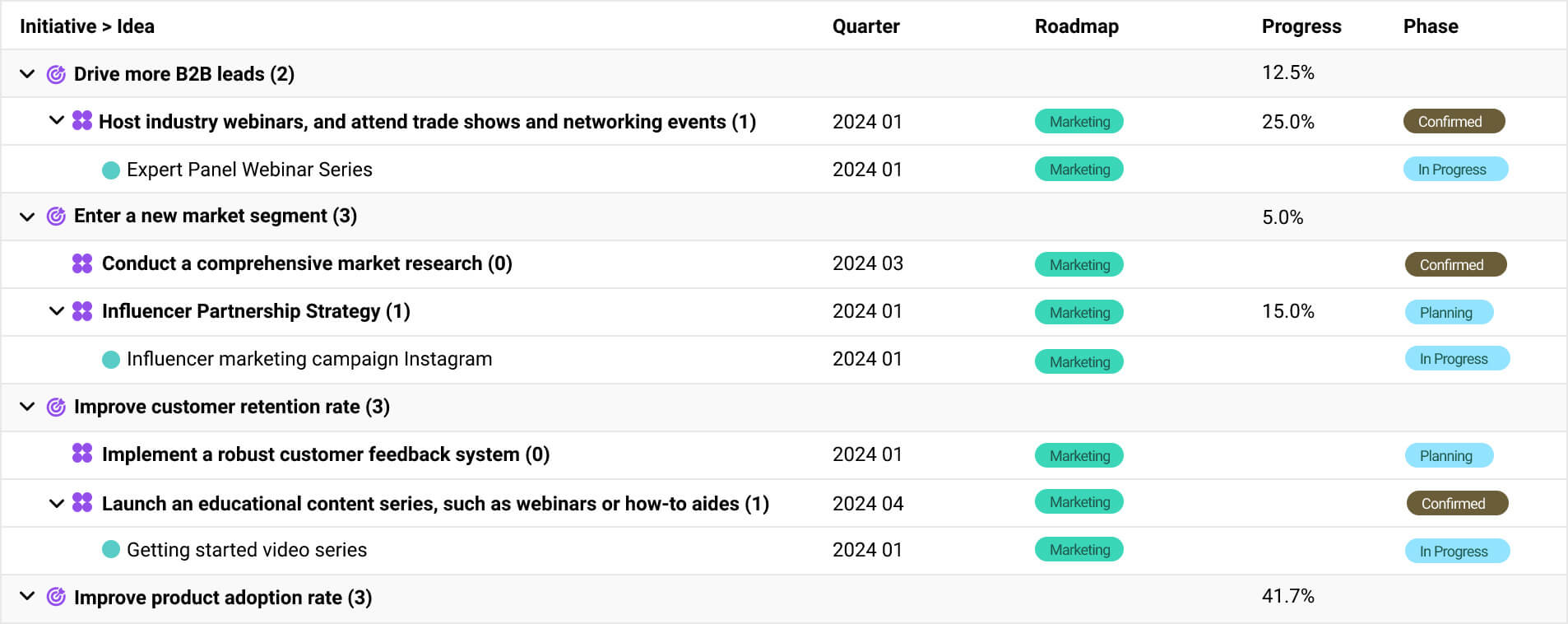
Theme-Based Marketing Roadmap
A theme-based marketing roadmap organizes initiatives around overarching themes supporting key business objectives or goals. Rather than focusing solely on individual tasks or projects, it emphasizes larger strategic focus areas.
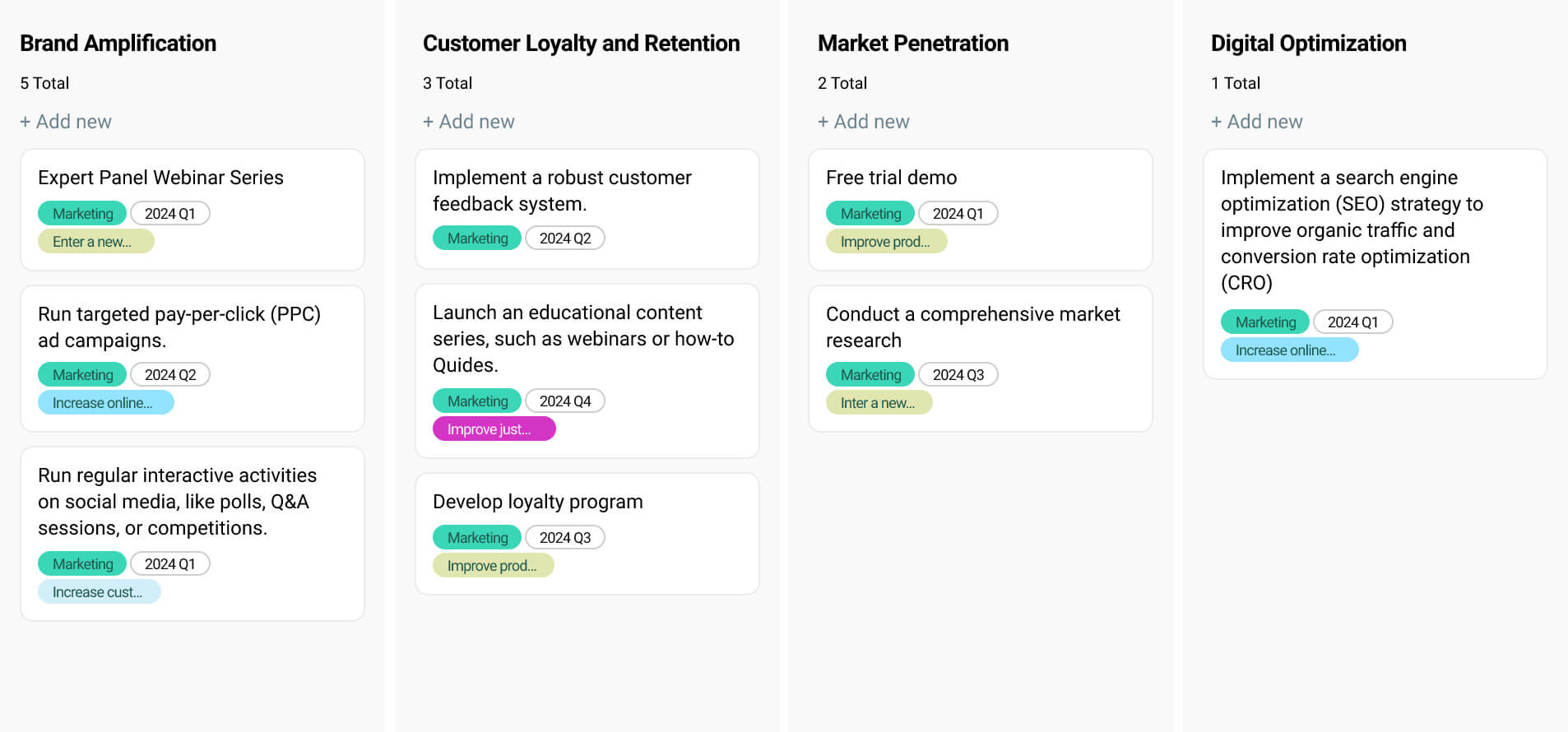
In addition to the above, Dragonboat allows you to slice and dice data easily. For instance, you can organize this same data to get a visual of the work associated with each of your distribution channels:
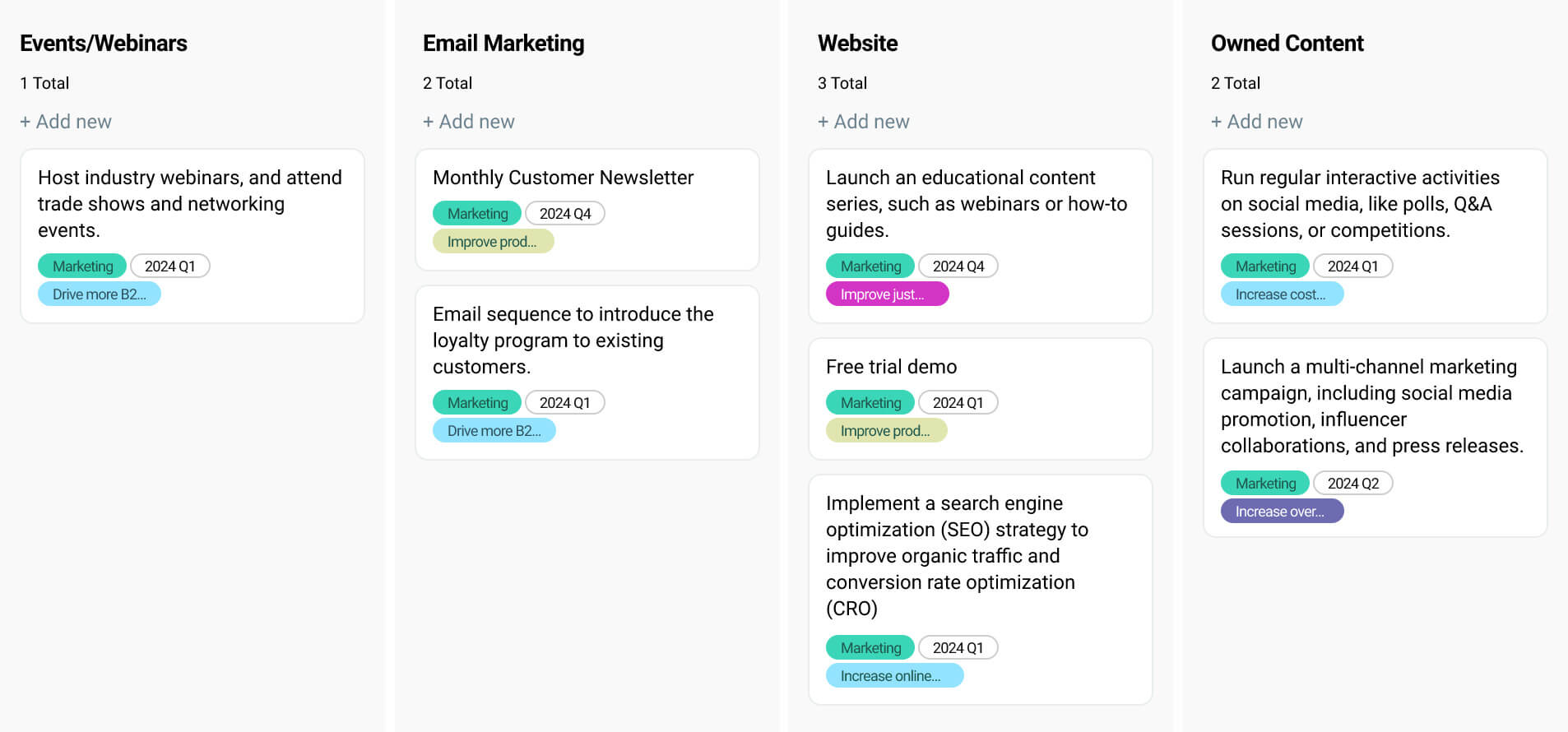
Upcoming Events Roadmap
In Dragonboat, an Upcoming Events Marketing Roadmap is a tool that provides a clear visual overview of all scheduled marketing events, from digital webinars to in-person events. It lets you see how these initiatives fit into the broader marketing strategy. It also outlines key details like dates and responsibilities, allowing teams to effectively plan, coordinate, and execute these events.
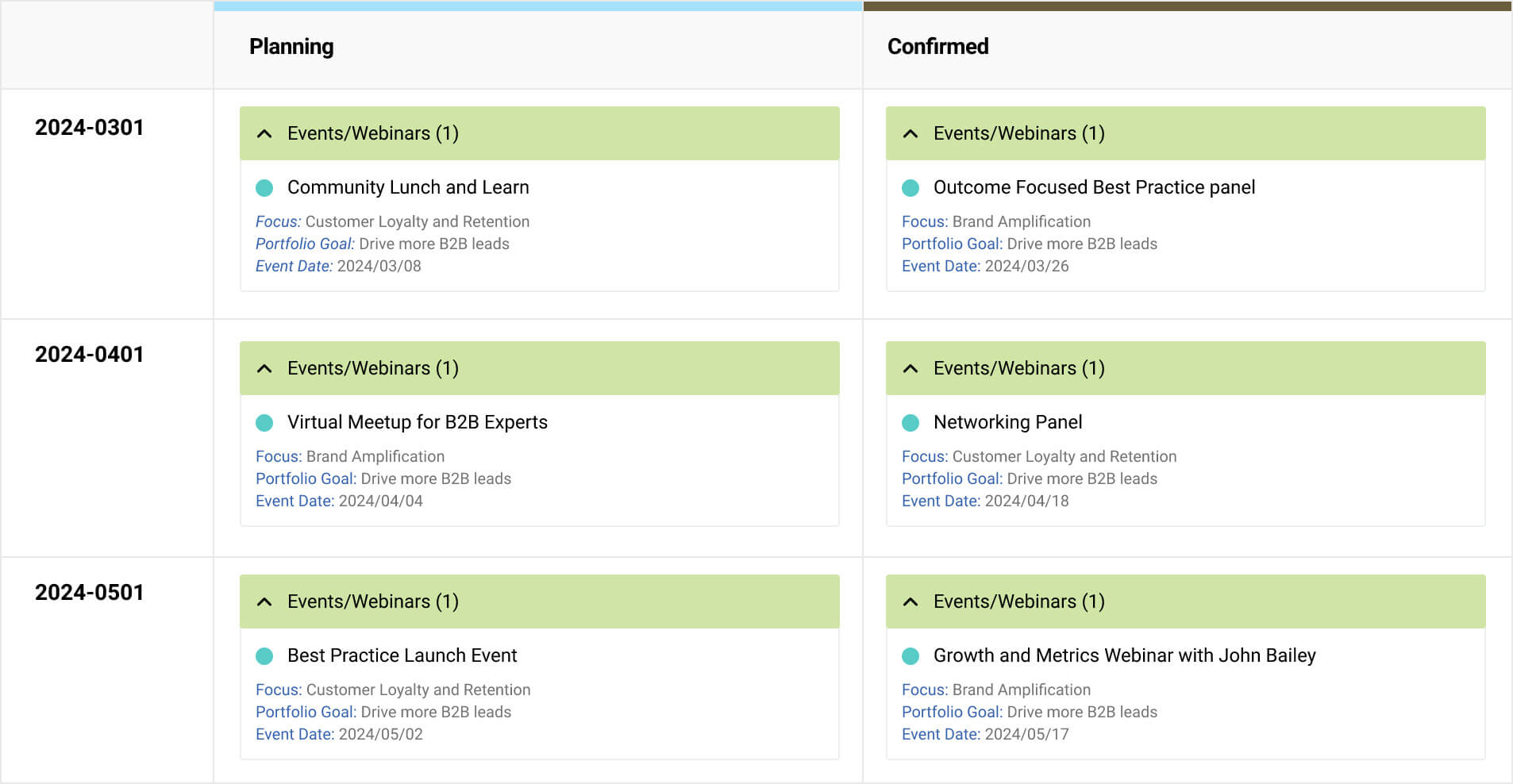
Go-to-Market (GTM) Playbook (PDLC)
Bridge the gap between go-to-market teams like marketing and engineering with a ready-to-launch view that includes the features under development alongside the go-to-market activities. This comprehensive view provides insight into all progress related to product releases.
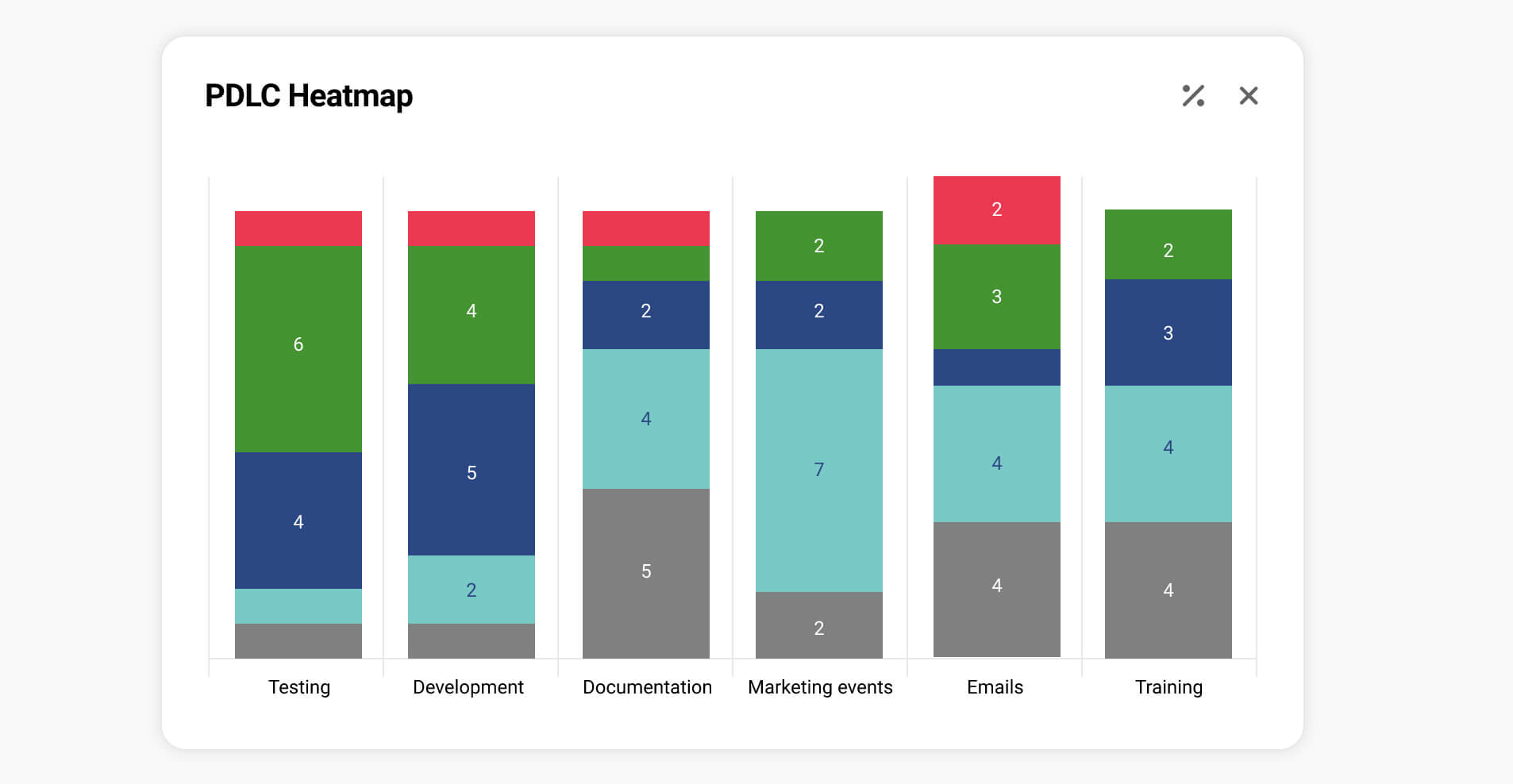
The Bottom Line
Marketing roadmaps are a vital tool for communicating what you are doing, why you are doing it, and managing your work in collaboration with others in your organization. When used correctly, they can make your job easier – driving efficiencies and boosting results.
At Dragonboat, we help teams build outcome-focused practices and streamline communication through our portfolio management tool. Check it out for yourself with our free trial, or schedule a demo with one of our product experts.


